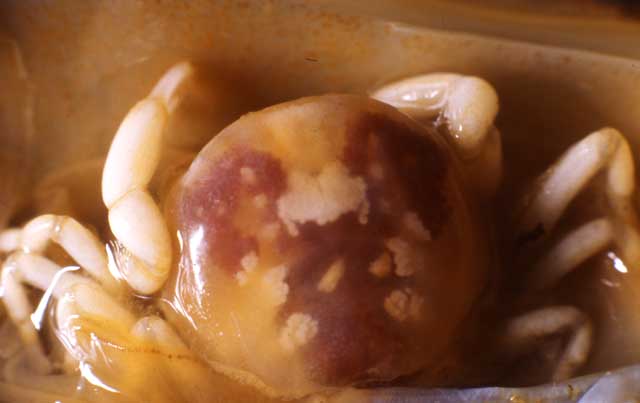
 |
MUSSELS
Mussels
from around the British Isles.
The
small specimen is the abundant Common Mussel,
Mytilus edulis, at
52 mm long. This species is found in beds of millions all around the British
Isles.
At
Kingston
beach, Shoreham-by-Sea, the Common Mussels attain a length of 70 mm,
(a largish specimen measured 68 mm) but the above specimen at 52 mm is
the normal size near low water mark.
The large specimen is the Horse Mussel or Clabachdubh (Black Mussel), Modiolus modiolus, at 142 mm long.
A bed of Horse Mussels (or Clabachdubh), Modiolus modiolus, at Noss Head off the northeastern tip of Scotland covers an area of 4 sq km.
Dogwhelks, Nucella lapillus, feeding on a Mussel, Mytilis edulis
This crab, as its name suggests, has a shell the size of a pea. Or, at least the brown male Pea Crab has. This is the crab that can be seen swimming in estuaries over mussel beds. It the most active swimmer of all the British crabs.
The female is quite different.
She is almost twice the size of the male and usually yellow with a bright
red blob on its soft shell. She is hardly able to crawl and cannot swim.
 |
 |
|
|
|
|
|
She does not need to because
she spends her whole life inside in a live mussel shell. The male fertilises
her eggs by swimming inside the mussel when it opens to feed.
|
|
|
|
|
News 2018 |
Membership Form |
|